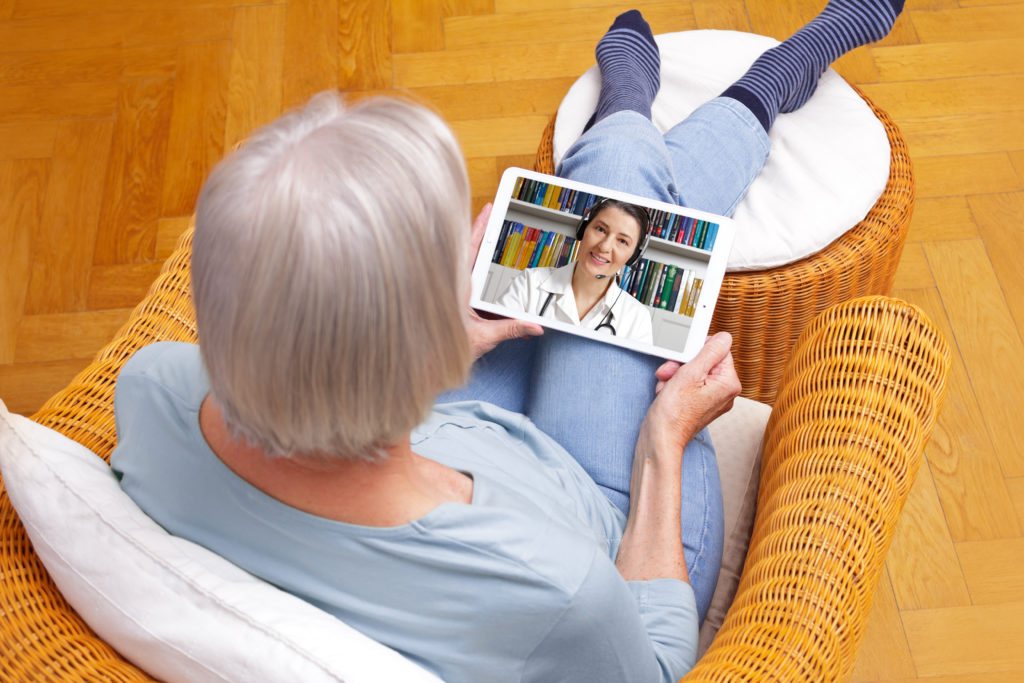In March of 2020, the Centers for Medicare & Medicaid Services (CMS) announced their expanded telehealth services reimbursement opportunities under the 1135 waiver authority and the Coronavirus Preparedness and Response Supplemental Appropriations Act.
This huge shift allowed previously restricted services to move to the home, including mental health counseling, behavioral health assessments, and preventative health screens. Between March and October 2020 alone, nearly 68 million telehealth appointments were conducted, a 2,700% increase.
I want to offer a place to start for providers who have not had to rely on telemedicine heavily before and are overwhelmed by an influx of information. The annual wellness visit (AWV) is one of the most intuitive services you can perform, and it can be delivered thoroughly via telehealth communication.
Some of the Major COVID-19 Changes to Telehealth Procedure
Under the expansion, there are no longer restrictions to telehealth based on a patient’s location. Before, patients could only receive telehealth if they lived in a rural setting and had specific conditions. In addition, a patient can receive select telehealth services with only audio to fulfill the requirement, but an AWV requires audio and video.
Medicare and Medicaid temporarily waived the requirement for providers to need licensure in the state where a patient is located. Under the expansion, clinical psychologists and licensed clinical social workers can perform telehealth services alongside doctors and nurses. Virtual check-in services or brief check-ins for new or established patients are permitted over the phone, through video chat, or patient portals.
Why Focus on an AWV?
The AWV is a comprehensive wellness check that allows providers to collect hierarchical condition category (HCC) codes, target and close care gaps, preserve their benchmark, and maintain patient-provider attribution during this period of separation. The G0438, or the Initial Annual Wellness Visit, and the G0439, the Subsequent Annual Wellness Visit, were approved to be conducted via telehealth. In addition, the AWV can provide updates on a patient’s physical health, behavioral health, and preventative care, including advanced care planning (ACP).
Taken from the American Medical Association (AMA), the following are steps to cover in an Initial AWV:
- Perform a Health Risk Assessment (HRA) (Attached from the American Academy of Physicians; the provider should complete the HRA with the patient during the exam, through the patient portal before the exam, or over the phone beforehand.
- Compile the patient’s personal medical history and their family history
- Establish a list of their current providers and healthcare suppliers
- Measure their vitals to the best of your ability (Routine measurements like height, weight, body mass index (BMI), blood pressure, pulse, and temperature are documented as “patient-reported” or “unable to obtain due to COVID-19 public health emergency” if they could not be measured)
- Screen for any concerning cognitive impairments
- Review potential risk factors for depression or other behavioral health concerns (a PHQ-9 test can be administered for depression screening)
- Review functionality, balance, fall risk, and level of safety in their environments
- Devise an appointment schedule for the next 5 to 10 years
- Offer health advice and referrals for health education or preventive counseling services or programs based on the patient’s needs
- Establish the risk factors and conditions for which primary, secondary, or tertiary interventions may be necessary or are already in motion
- Discuss advance care planning services (optional)
More Medical Professionals Can Perform AWVs
As mentioned earlier, behavioral health professionals and social workers can better combat challenges with social determinants of health are included with the expansion. The changes to telehealth permit services to be performed by licensed medical professionals or teams of medical professionals under the supervision of a physician or non-physician practitioner and can be in the same location as the provider or ensure the provider is available during the telehealth visit.
We have had many discussions with our clients as they reform their strategies in response to COVID-19. A struggle that many are facing is the inevitable need to lay off, or furlough staff with the loss of revenue, or care managers are needed to perform administrative tasks instead of working with patients. With the telehealth expansion, nurses have more power to administer AWVs and other services, and we encourage you to use them whenever possible.
The Telehealth AWV Can Assess Physical, Behavioral, and Preventative Health
In response to the first question of why we focus on the AWV, this billable telehealth visit covers every base to ensure Medicare patients are attended to during the extent of the coronavirus pandemic. In addition, the impacts on the patient’s health and the long-term effects fiscally should encourage confidence in telehealth. If I can answer any questions or point you in the direction of one of our clinical transformation experts, do not hesitate to contact me.
I encourage you to visit the Lightbeam Education Center for webinar presentations and the blog for additional insight from Lightbeam experts!

Christine DiNoia, BSN, RN is the Director of Clinical Programs at Lightbeam Health Solutions.
